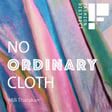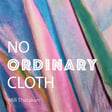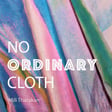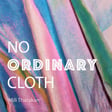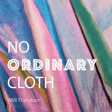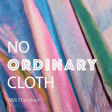
🌱 Ep 23. Stitching together South American Folklore, Migration and Community with Jennifer Droguett Espinosa (x Fashion District)
Special episode by No Ordinary Cloth x Fashion District
In this episode of No Ordinary Cloth, host Mili speaks with Jennifer Droguett Espinosa, a Colombian and Chilean Sustainable Fashion Designer and Creative Director, and the founder of Anciela. Jennifer shares how her early experiences with migration, identity, and upcycling shaped her personal and creative outlook. She discusses her journey from making her own clothes as a child through to studying fashion in Amsterdam, interning with Viktor & Rolf, and building her career and community in London.
Jennifer talks about the origins of Anciela, a brand deeply rooted in storytelling, South American folklore, and experimental tailoring, and grounded on the pillars of culture, sustainability, community, and visibility. She details her creative process, how she layers history, literature, music, and personal memory into collections, and the stories behind some of her signature pieces.
The conversation covers Anciela’s approach to circularity, including sustainable material choices, zero-waste techniques, refresh and repair services, and pioneering digital product passports for transparency. Jennifer opens up about collaborating with Latinx creatives, working with diaspora charities, and making fashion more accessible through inclusive events and workshops. She reflects on her time with the Fashion District’s Evo Fashion programme and the British Fashion Council’s low-carbon initiative, highlighting the challenges and rewards of growing a purpose-led business.
Jennifer concludes with advice on conscious consumption, the importance of small actions, and the need for more brands to center community, inclusivity, and honest storytelling.
Anciela: Website I Linkedin I Insta
Mili Tharakan: Website I Linkedin I Insta I Buy me a coffee
Resources
Evo Fashion - a four-month experiential support programme for emerging brands and fashion technology businesses. It will help you to integrate sustainability into every aspect of your business, taking a holistic approach to business strategy and focusing on supply chain sustainability, ethical working standards, channels to market, and investment readiness. Deadline: 4th August 2025
Low Carbon Transition Programme for SMEs report by British Fashion Council
The travels of a T-shirt in the global economy, book by Pietra Rivoli
One Hundred Years of Solitude, book by Gabriel García Márquez
If you enjoyed this, please share the episode with a friend or colleague. Subscribe and leave a review, I love to hear your feedback.
Cover art: Photo by Siora, Photography on Unsplash
Music: Inspired Ambient, Orchestraman
